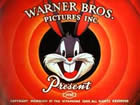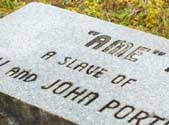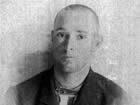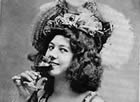The 1870s in Lake County:
An Oregon Folklore Studies interview by Sara Wrenn of the WPA Federal Writers' Project with old Lake County cattleman Gus Schroder at his home. Gus was the widower of Silver Lake fire heroine Lucinda Schroder.
Editor's Note:
In the afternoon of March 23, 1939,
Sara B. Wrenn, a writer working for the Works
Progress Administration, sat down with an old
Eastern Oregon cowboy named Gus Schroder on
a bench in the Park Blocks. There, surrounded by
other Portland neighbors who were out soaking
up the rare early-spring sun in the park, she
interviewed him for the oral-history project she
was working on. What follows is the story she wrote.
Mr. Schroder was living at 1315 S.W. 10th Avenue
in Portland. He'd been a wealthy and successful Lake
County cattleman, but the Depression had busted
him flat, and now he was living in Portland and just
trying to get by. But, Wrenn wrote, "his heart is on
the ranges in the big outdoors."
Wrenn described him as a "fine looking man, large,
smooth faced with brown eyes, and meticulous in
his dress. ... A character of the 'Virginian' cowboy
type, gentle and slow-speaking, and still handsome."
He was a member of the Odd Fellows, originally
from Red Bluff, Calif., but more recently living in
the Silver Lake area. In 1894, his wife, Lucinda
Schroder, and their two-year-old son died in the
great Christmas Eve fire there — Lucinda, by the
way, was the great hero of the fire, having saved
dozens from burning to death. (Here's that story.)
By Sara B. Wrenn — March 27, 1939
Lake County was a wonderful stock country when I went there in '78. There was lots of game too — just about everything there was; an' houses was few an' far between. What there was was log houses. They was perty rough, with plenty of corrals about. The logs was hauled from Mt. Hagar, seven or eight miles away.
Once a week we got the mail, brought out to Silver Lake by team an' buckboard. Paisley was the nearest town. It was sixty miles to Paisley and it had only about 200 people, but it had saloons. When the boys wanted them a time they went to Paisley.
They was great on playin' jokes on each other, specially when they got a few drinks under their belts. Once there was a bunch of us at Paisley. We was watchin' a big card game in the saloon. There was quite a lot of chips passin' hands, an' everybody was watchin'. So Joe Bush he slips out and he gets a candle, an' he rolls it in brown paper, an' then he lights it, an' then he come in an' threw it in among the bunch. It looked jest exactly like a lit stick o' dynamite. An' Criminy! how them fellers skedaddled! They was goin' in every direction for Sunday, an' chips was flyin' every which way. The boys was all so mad when they see what it was they chased Joe out, an' he lit out for home. He didn't show up there for some spell.

A postcard image from the early 1910s showing a herd of shorthorn
cattle in what appears to be Lake County, turned out on their winter
range.
'Nother time a joke was played was once when Sam Hadley got drunk an' we laid him out on a billiard table an' covered him with a cloth. It must have bin an old tablecloth or somethin', cause it was white. An' then Minor Wallace, he was a preacher's son and he knew jest what to say — he preached a funeral sermon over Sam. Gosh Almighty! but that Minor Wallace could talk. He sure would of made a good preacher.
While he was preachin' Sam's funeral oration, Sam come to out of his sleep. An' of all the cussin' you ever hear! Sam was good at that.
He was good lookin', too. Once when he was drunk I took a cork an' stuck it full of matches. I fast'n'd the cork to a little stick, split at one end, then I put the split and on Sam's nose an' lit the matches and hollered "Fire!" It didn't burn him any, too far away from his face for that, but it did black him aplenty. Sam was mad at me a long time for doin' that.

This postcard, also from the 1910s, shows a roundup camp on the
Oregon range of central or eastern Oregon.
Course we had lots o' buckin' contests. They was the real thing too. Nothin' made up about them like these rodeos today. An' the saddles didn't have places to put your knees under to help hang on. The saddle them days was a seat with mighty little curve an' a pommel for your lass' rope, an' that was all. Not a lot of contraptions like now.
Burrell Conger was about the best on a horse I ever saw. I never see him get thrown, an' he'd ride 'em just for fun. The boys'd go out an run in a wild horse, then they'd work it into the "chute" (narrow, railed-in addition to a corral, where, the horse has no room to move), throw a saddle on an' cinch it. Then Burrell would jump in the saddle. The boys would open the chute an' away they'd go out in the open, an' there'd be some fun. Mebbe that cayuse 'd try ev'ry damn fool buck there was! Twisters, stiff-legged, whirlin', rearin', everythin'. But he wouldn't get that boy Conger off. An' mind yuh, he wouldn't even have a bridle. Shucks, what 'as the use? The ol' cayuse wouldn't know what it meant.
By an' by, when he was all give out — the horse I mean — the boys'd chase him back in the corral an' the chute, an' Burrell'd climb off, chipper as you please.

This postcard shows two cowboys with part of their herd during a
cattle drive in southern Oregon, near the town of Kerby.
There was one boy, a halfbreed named Walt Sibley, ridin' for John Jackson of Goose Lake Valley. He rode a mustang till he got to bleedin' at the lungs. The boys had to lass' the pony an' take him off. He jes' about died.
I've seen some perty fine ropin' in my day. One feller I knew was about the best I ever seen. He could lass' underhand an' overhand. I've seen him throw a calf 30 feet away, catchin' both hine feet. He us'd a big loop. He'd throw the lass' agin' the shoulder so it 'uld lop under the belly, an' then he'd jerk it up quick so it 'uld catch both feet. I seen him do that eight times out a' ten over 'n over agin.
I wasn't no mean roper myself. Once a feller named Duncan and me was ridin' up in the mountain range. We seen some mountain sheep, an' we took after 'em. Finally I lass'd one. Mountain sheep's stupid an' stubborn, jest like other sheep. This 'un was scairt an' it wouldn't budge no way. I tied my riata to my saddle horn an' pulled, but I couldn't do enything with it. So Duncan an' I tied its legs an' tried to pack it on our horses. That didn't work neither, so we got tired an' turned it loose.

This very old, badly tinted postcard, which may actually date back to the
1890s, shows a hillside dotted with sheep in Eastern Oregon.
'Bout the most excitin' thing I remember was a cattle stampede back in the early '90s. There was 12 or 14 riders of us and we was takin' 2,000 steers out to the Sycon country. They'd been bought an' taken in small bunches out to Cold Springs, an' that was where we picked 'em up. On from there it was a 120 mile drive. 'Course we had to ride herd at night, doin' it in two shifts. I was boss of the first shift.
It was midnight. We'd bin singin, an' I was jest startin' to go after the boys for the second shift, when one o' my boys — Johnny Parker it was — started brayin' like a jack.
Man! it wasn't more'n the shake of a sheep's tail when them cattle begin millin' an' then they was off. Yuh never heard such a racket in your life, what with their runnin' on that hard open ground, their bellowin' an' their horns crashin! Their horns crashin' was the worst. Yuh wouldn't think they could make so much noise. They was jest crazy with fear.
Well, there wasn't much sleep for any o' us that night. We'd try to get 'round 'em, yellin' like mad, an' every once in a while the tail end o' the big bunch would drop off an' wander away, an' then they'd have to be herded in.
It was long after sun-up 'fore we got 'em in control, 'an then we found we was 26 head out. Four was killed an' the rest we finally tracked up to the mountains an' got back. We was 12 days goin' that 120 miles.
We had a lot o' songs we sung, but the only ones I remember was the "Spanish Cavalier," "Juanita," "Leather Britches," an' "Thru the key-hole in the door." That last was kind-a smutty, not bad, just kind-a smutty. I don't remember how they went, any of 'em, just their names.
The boys them days didn't dress so gaudy as these rodeo riders. They wore chaps, o' course. Sometimes they was goatskin with the hair outside. Sometimes cow leather, mebbe just plain or mebbe with fancy carving on 'em. They wore flannel shirts most o' the time, but plain colors, not these big checked things like we see today. They wore Stetson hats with stiff brims, an' of course they wore neckerchiefs. There was sense to that to keep their necks from burnin'.
There was a time for four or five years in the '80s when the boys wore tailor-made pants, made perty tight, with a strip o' buckskin up the inside seam an' buckskin sewed over the seat. This buckskin was sewed on with fancy, colored thread in fancy stitchin', so they was perty gay. That was quite a style with the boys out there, an' I never knew of them pants bein' wore any place else. I don't know who started it.
We didn't have much racin'. Guess the boys was too tired ridin' range. But I did see one race I'll never forget. It was at Paisley. There was a feller there called Dick Sherlock. Nobody liked him very much. An' there was Uncle George Duncan. Sherlock had what they called a sheepcamp team, an' Uncle George had a span a bays. Some way they got arguin' about which could go faster, an' they settled it on the track. There was a mile track, a n' those two men got out, one in his buckboard — that was Sherlock — an' Uncle George in his buggy, an' away they went lickity-split. They run them horses clear 'round that mile track. Ev'ry minnit look'd like one or 'tother 'd go over. Everybody in town — 'bout two or three hundred people — was out yellin' their fool heads off. Even the women was out, yellin' "Come on, Uncle George! Come on, Uncle George!" Uncle George beat by 'bout 60 feet.
I never got lost but once, 'an then it wasn't in enny blizzard; just a common old snowstorm. Duncan and me was up' in the Tamarack Mountains. We was kind-a cold, so we built a fire and warmed up, an' then we started home. Snow was fallin' but it wasn't bad. We kept goin' an' goin' an' gettin' no place, an' perty soon we came to same tracks, an' Duncan sez, "There goes a couple o' ol' bulls, let's follow 'em up." We followed 'em, an' perty soon there we was right where we'd built a fire to warms ourselves! There, we thought we was all right an' we was just goin' in a circle all the time. But there wasn't anything scary 'bout it. We soon found our way out.
We didn't have much dancin'. The nearest girls was at Paisley. That was too far to go very often. 'Bout the only chivarri in my recollection was my own. That was in 1888. It vas on my ranch at Silver Lake. Some o' the boys tipped me off, so when the crowd come I was ready for 'em. I had a double-barreled shot-gun an' I filled her up with powder. When I heard 'em, I opened the door a mite and stuck that gun out, an' Jack Kelsey yelled, "Jesus Christ, boys, he's shootin' at us!" I hed to laugh then. I called 'em in. I had a couple o' jugs o' whiskey I give 'em, an' they got teed up an' went home.
(Editor's note: To see the original interview documents on the WPA's Web site, click here. Also, please note that the text of this interview is in the public domain and is therefore NOT subject to my usual Creative Commons license.)





















